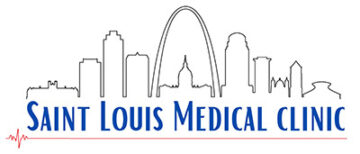No woman looks forward to getting a mammogram. The squeezing and pushing is certainly no fun, but it is the best screening tool to detect breast cancer. However, there are many other examinations such as a breast MRI that can be used by St. Louis Medical Clinic to diagnose cases of abnormal breast tissue.
Use of Mammograms
Mammograms are used by doctors and radiologists to detect breast cancer. Using X-ray radiation, this imaging test looks at breast tissue and determines the differences in breast density. Younger women typically have more density to their breasts than older women unless they are postmenopausal and on hormone replacement. If there is a tumor in the breast, it will show up during a mammogram as having a higher density than normal breast tissue and will appear as a lighter, solid mass.
During a mammogram, multiple scans are created and cross examined so the radiologist can view the breast from different angles. The breast is compressed with each X-ray taken.
Sensitivity is a term used to evaluate the percentage of time a mammogram is reliable and gives a correct result. For the average female, the sensitivity rate is 75%. For a younger woman with dense breasts it can drop to between 48 – 64%. Sometimes, additional scans and imaging tests are needed to evaluate particular areas of concern or calcification.
The Breast MRI
A breast MRI is a more comprehensive test used to screen for breast cancer, and is often recommended for women who are at a higher risk for this particular type of cancer. A completely harmless dye known as gadolinium is injected into the patient’s body to better see the density of the breast tissue during the MRI. The image resolution of a breast MRI is 10 to 100 times more powerful than a simple mammogram.
During a breast MRI, the patient moves through a tube which projects magnetic and radio waves, and is able to produce extremely detailed cross sections of the breasts. The test normally lasts for 45 to 90 minutes. If someone is claustrophobic, this test can be difficult.
Mammograms Versus Breast MRIs
Although both of these tools are used to identify breast cancer, there are some distinct differences, advantages, and disadvantages of both. In order to be a truly effective medical tool, experts need to evaluate the following considerations when selecting which imaging test to use for an individual patient:
- Reliability
- Cost
- Availability
A mammogram fulfills all three of these criteria.
A mammogram is more affordable than an MRI. Most insurance companies will not cover the cost of a breast MRI unless an abnormality is first found using a mammogram or an ultrasound.
A breast MRI is suggested when a woman has very dense breasts and when she is considered to be at a higher risk. It is a better tool to distinguish between the various types of tissue. Talk with our office about your own personal risk assessment.
An MRI is more likely to give a false positive than a mammogram. This is because it will highlight both cancerous and benign tumors with little difference in the characteristics of both. False positives can result in more tests and biopsies, and therefore become more costly. A mammogram can also give false positives, but not nearly as many as a breast MRI.
A breast MRI is commonly used for women who have already been diagnosed with breast cancer in order to measure the tumor’s size and potential spread of the cancer to other areas of the body. Many times it is used to help our providers accurately determine which stage of breast cancer a particular patient is in.
Not all hospitals and imaging centers have breast MRI equipment so it is not as available. Machinery used for a mammogram is much more standard and easy to access.
Fast Breast MRI
Recently, what is called a fast breast MRI is being used with mammography for high risk women. It only takes 10 minutes, is no more expensive than a mammogram, and is able to detect more cancers than a mammogram and ultrasound together.
The best way to determine which type of diagnostic imaging test is most beneficial for you is to speak with your provider and know your risks. Talk with our office about your breast cancer risks, and if a breast MRI would be advantageous for you.
Sources:
https://www.cancer.org/cancer/breast-cancer/screening-tests-and-early-detection/breast-mri-scans.html https://medium.com/@KPWaResearch/what-to-expect-after-a-screening-breast-mri-vs-mammography-alone-9beceabd646a https://ww5.komen.org/BreastCancer/BreastMRI.html https://www.verywellhealth.com/meaning-of-breast-calcifications-on-mammogram-430279

